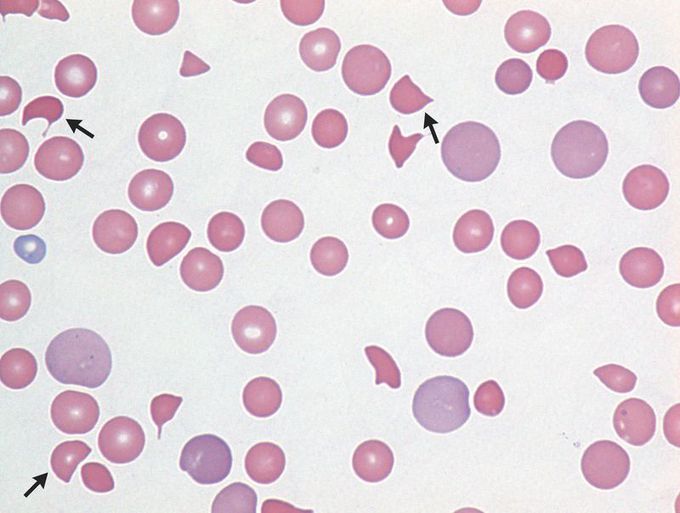

Thrombotic Thrombocytopenic Purpura
A 35-year-old man presented to the emergency department with a 2-day history of abdominal pain, headache, and brown urine. On examination, his temperature was 37.5°C. He was alert and oriented to time, place, and self, and he had no purpura or petechiae. Laboratory evaluation revealed a hemoglobin level of 8.6 g per deciliter (normal range, 13.7 to 17.5) and a platelet count of 6000 per cubic millimeter (normal range, 140,000 to 370,000). Levels of indirect bilirubin and lactate dehydrogenase were elevated, haptoglobin was undetectable, and the serum creatinine level was 1 mg per deciliter (88 μmol per liter; normal range, 0.6 to 1.3 mg per deciliter [57 to 115 μmol per liter]). Test results for infection with the human immunodeficiency virus were negative. A peripheral-blood smear showed numerous schistocytes (arrows). These findings were consistent with a microangiopathic hemolytic anemia. Plasma exchange for suspected thrombotic thrombocytopenic purpura was started immediately. Without the prompt initiation of treatment, mortality from thrombotic thrombocytopenic purpura is high. The patient underwent plasma exchange and received intravenous methylprednisolone for 5 days and had resolution of symptoms and an increased platelet count. The diagnosis was confirmed 2 days after initiation of treatment, with ADAMTS13 activity of 1%. He was discharged with instructions for tapering glucocorticoid treatment. Three months after discharge, he remained well.
